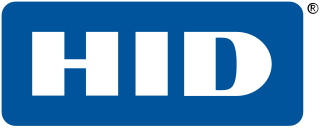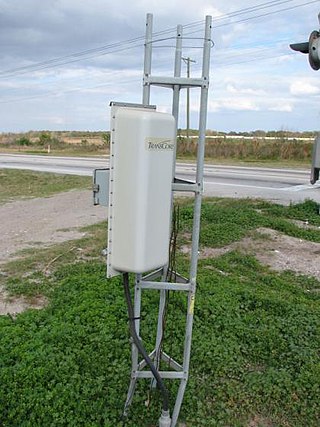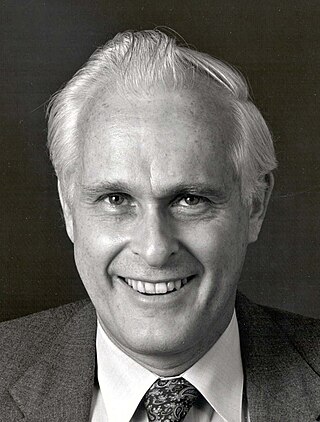
A barcode or bar code is a method of representing data in a visual, machine-readable form. Initially, barcodes represented data by varying the widths, spacings and sizes of parallel lines. These barcodes, now commonly referred to as linear or one-dimensional (1D), can be scanned by special optical scanners, called barcode readers, of which there are several types. Later, two-dimensional (2D) variants were developed, using rectangles, dots, hexagons and other patterns, called matrix codes or 2D barcodes, although they do not use bars as such. 2D barcodes can be read using purpose-built 2D optical scanners, which exist in a few different forms. 2D barcodes can also be read by a digital camera connected to a microcomputer running software that takes a photographic image of the barcode and analyzes the image to deconstruct and decode the 2D barcode. A mobile device with a built-in camera, such as smartphone, can function as the latter type of 2D barcode reader using specialized application software.
Hand Held Products was a US electronics manufacturer, established in 1981 in North Carolina. The company was a manufacturer of linear and 2D handheld barcode scanners based on imaging technology. Its product range included rugged mobile computers, image kiosks, and barcode verification devices. Its range of data collection and communication products were designed for mobile, on-site, and transaction processing applications. In 2007, the company was subsumed into the Honeywell Group.
Automatic identification and data capture (AIDC) refers to the methods of automatically identifying objects, collecting data about them, and entering them directly into computer systems, without human involvement. Technologies typically considered as part of AIDC include QR codes, bar codes, radio frequency identification (RFID), biometrics, magnetic stripes, optical character recognition (OCR), smart cards, and voice recognition. AIDC is also commonly referred to as "Automatic Identification", "Auto-ID" and "Automatic Data Capture".

Zebra Technologies Corporation is an American mobile computing company specializing in technology used to sense, analyze, and act in real time, sometimes known as smart data capture. The company manufactures and sells marking, tracking, and computer printing technologies. Its products include mobile computers and tablets, software, thermal barcode label and receipt printers, RFID smart label printers/encoders/fixed & handheld readers/antennas, autonomous mobile robots (AMR’s) & machine vision (MV), and fixed industrial scanning hardware & software.

Bag tags, also known as baggage tags, baggage checks or luggage tickets, have traditionally been used by bus, train, and airline carriers to route checked luggage to its final destination. The passenger stub is typically handed to the passenger or attached to the ticket envelope:
- to aid the passenger in identifying their bag among similar bags at the destination baggage carousel;
- as proof—still requested at a few airports—that the passenger is not removing someone else's bag from the baggage reclaim hall; and
- as a means for the passenger and carrier to identify and trace a specific bag that has gone astray and was not delivered at the destination. The carriers' liability is restricted to published tariffs and international agreements.

HID Global is an American manufacturer of secure identity products. The company is an independent brand of Assa Abloy, a Swedish door and access control conglomerate. Björn Lidefelt was appointed CEO on 27 January 2020. He succeeded Stefan Widing, who led HID Global for over four years.

Automatic equipment identification (AEI) is an electronic recognition system in use with the North American railroad industry. Consisting of passive tags mounted on each side of rolling stock and active trackside readers, AEI uses RF technology to identify railroad equipment while en route.

Symbol Technologies is an American manufacturer and supplier of mobile data capture and delivery equipment. The company specializes in barcode scanners, mobile computers, RFID systems and Wireless LAN infrastructure. In 2014, Symbol Technologies became a subsidiary of Zebra Technologies, and is headquartered in Holtsville, New York, on Long Island.
Metrologic Instruments is an automated identification and data capture (AIDC) company headquartered in Blackwood, New Jersey. It designs, manufactures, and markets bar code decoding hardware, adaptive optical solutions, and high-speed image processing software. Metrologic Instruments is a division of Honeywell with more than 20 sales and manufacturing sites in North and South America, Europe, Asia, Australia, and Russia. It was founded in 1968 by C. Harry Knowles and initially concentrated on the manufacture of helium–neon laser kits for academic instruction. These kits were sold to physics teachers throughout the United States. In 1975 after breakthroughs in bar coding technology, it developed the world's first hand-held helium–neon laser bar code scanner. These bar code scanners utilize a broad array of technologies including laser, holographic, vision-based, and radio-frequency identification (RFID). The scanners help merchants process bar-coded merchandise.

A barcode system is a network of hardware and software, consisting primarily of mobile computers, printers, handheld scanners, infrastructure, and supporting software. Barcode systems are used to automate data collection where hand recording is neither timely nor cost effective. Despite often being provided by the same company, Barcoding systems are not radio-frequency identification (RFID) systems. Many companies use both technologies as part of larger resource management systems.
Smart Label, also called Smart Tag, is an extremely flat configured transponder under a conventional print-coded label, which includes chip, antenna and bonding wires as a so-called inlay. The labels, made of paper, fabric or plastics, are prepared as a paper roll with the inlays laminated between the rolled carrier and the label media for use in specially-designed printer units.
CipherLab is a company that designs, manufactures and markets automatic identification and data capture (AIDC) products and systems. The company's mobile computers and barcode scanners are integrated into the networks of government and logistics installations worldwide, as well as grocery, manufacturing, retail, distribution, agricultural and healthcare companies. Headquartered in Taipei, Taiwan with North American headquarters in Plano, Texas, and operations in Europe, the Middle East and Africa (EMEA), the Americas, Asia-Pacific and China, CipherLab is publicly traded on the Taiwan Stock Exchange.
The Wireless LAN Interoperability Forum (WLIF) was a non-profit industry organization founded in 1996 to promote and certify wireless LAN products. It was active from about 1996 through 1998 and disbanded in 2001.

David Allais is an American expert and inventor in the fields of bar coding and automatic identification and data capture. As vice president and later president and chief executive officer of Everett, Washington-based Intermec Inc. (NYSE:IN), he built the company from a small startup into the leading manufacturer of bar code and printing equipment. Prior to Allais' role at Intermec, he served as a manager for IBM. Most recently, Allais founded PathGuide Technologies, a Bothell, Washington-based developer of warehouse management systems for distributors.

CYBRA Corporation is a software developer, publisher, and systems integrator in the IBM midrange market. CYBRA provides bar codes, RFID, and RTLS systems for IBM Power Systems and other server lines and other major computing platforms, bar code label and tag printing, and bar code scanning systems.
Barcode technology in healthcare is the use of optical machine-readable representation of data in a hospital or healthcare setting.
Lowry Solutions provides RFID services, barcode and wireless networking services, bar coding equipment, automatic label applicators, software, custom labels, ribbons and supplies.

Datalogic S.p.A. is an Italian company working in the automatic data capture and process automation markets. The group specializes in the design and production of barcode readers, mobile computers, radio-frequency identification, sensors for detection, measurement and safety, vision and laser marking systems. Datalogic products are used in many supermarkets and points of sale, at airports, at shipping and postal services, and in factories and hospitals worldwide.
Barcode library or Barcode SDK is a software library that can be used to add barcode features to desktop, web, mobile or embedded applications. Barcode library presents sets of subroutines or objects which allow to create barcode images and put them on surfaces or recognize machine-encoded text / data from scanned or captured by camera images with embedded barcodes. The library can support two modes: generation and recognition mode, some libraries support barcode reading and writing in the same way, but some libraries support only one mode.










